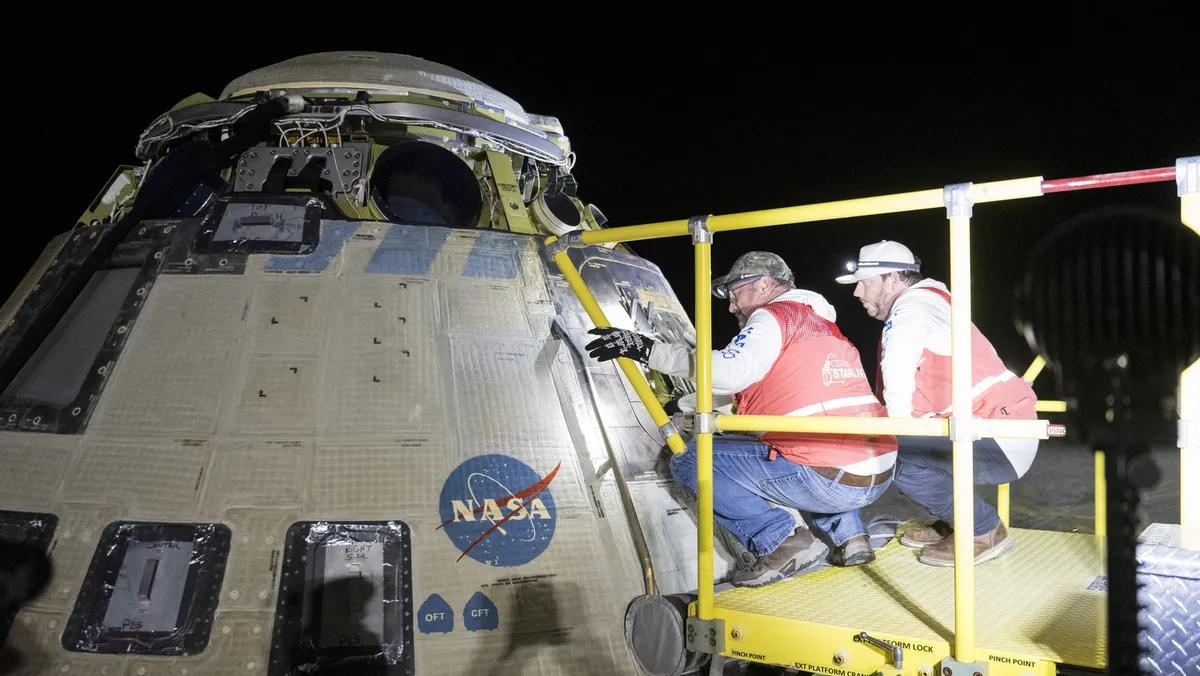
While America's space program has experienced several tragedies throughout its history, no mission has ever left the remains of a lost astronaut drifting in the vast expanse of space. In preparation for the worst-case scenario, NASA has developed comprehensive protocols for handling an astronaut's death on the International Space Station (ISS), a complex structure of metal tubes orbiting the Earth in the inhospitable vacuum of space.
NASA's current procedures concerning an astronaut's death revolve around a specialized device known as the Human Remains Containment Unit (HRCU). According to reports from Scientific American, this somber piece of equipment was transported to the ISS in 2012. Much like how morgues on Earth utilize refrigeration to slow down human decomposition, the HRCU is designed to be integrated into the ISS's refrigeration system, ensuring that it is stored in a non-pressurized area. The unit features an absorbent lining and screw-on charcoal filter canisters to aid in containment.
The primary objective of the HRCU is to provide NASA Flight Directors with a crucial 72-hour window to make informed decisions regarding the situation. In the absence of a medical examiner in space, NASA trains its crews to carry out In-Mission Forensic Sample Collection. Surviving astronauts would photograph the deceased's body and collect samples, including hair, tissue, blood, and other fluids, all while communicating with NASA's flight surgeons during what could be described as the most distressing telemedicine call imaginable.
Following the collection of samples, there would be a solemn ceremony to allow the crew to grieve the loss of their colleague. NASA would then likely arrange for the astronaut's remains to be returned to Earth. The HRCU is equipped with straps on its corners, designed to loop through a spacecraft's seat restraints, allowing astronauts to secure the remains in their departed colleague's seat during the journey home.
In the case of a death occurring on the ISS, a traditional burial-at-sea would not be a feasible option, as future orbits of the station could potentially encounter the remains. However, it is not entirely out of the realm of possibility that future deep-space missions could mimic the iconic funeral scene of Spock from Star Trek II: The Wrath of Khan.
NASA's death protocols are not solely implemented out of respect for the deceased astronaut and the psychological well-being of the surviving crew members; they also consider the societal impact of such tragedies. When calamities occur within the space program, they resonate deeply with the public. For instance, the devastating loss of the entire Apollo 1 crew during a rehearsal nearly halted the lunar program before it could even commence.
The aftermath of the Apollo 1 disaster prompted the White House to prepare for similar events. Bill Safire, a speechwriter for President Richard Nixon, composed a speech intended for use in the event of a disaster during the Apollo 11 mission in 1969. The somber address, which was never delivered, began with the poignant line, “Fate has ordained that the men who went to the moon to explore in peace will stay on the moon to rest in peace.”
While Neil Armstrong and Buzz Aldrin successfully landed on the Moon and returned safely, NASA has faced further tragedies since the historic Apollo 11 mission. The catastrophic losses of the Space Shuttle Columbia and Challenger, both resulting in the deaths of all crew members, were perceived as national tragedies that shook the public's confidence in space exploration.
As commercial spaceflight and international space programs continue to grow, the implications of a death in orbit may increasingly be viewed as a workplace accident, further emphasizing the importance of NASA's carefully crafted protocols for dealing with such dire situations in the future.